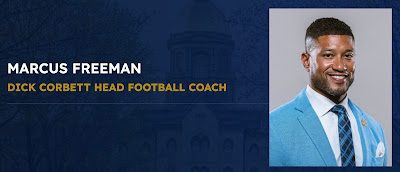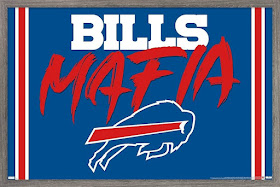In the center of my grandparents' living room stood a stately fireplace with a wooden mantle, adorned with six framed 8" × 10" photographs of my grandfather, my father, and four uncles. The portraits were arranged chronologically from oldest to youngest—three on the right and three on the left. I can still recall with remarkable clarity details about each one. But, one in particular was extra special.
 |
| Coach and Family. Enumclaw, WA. 1952 |
Looking at that photograph, I remember asking my parents, "Who is that?"
"That's your Uncle Guy," they replied. Guy lived in New York City, so I hadn't yet met him. Even though I was only three or four years old, I vividly recall thinking, "Wow! I have another uncle! Lucky me!" To this day, that's exactly how I feel. Call it luck, a blessing, or both—I am forever grateful to have had an uncle like Guy.
I share this memory because I would like to write a tribute in his honor. Guy passed away peacefully in his sleep on Saturday, March 29, 2025 at his home on Vashon Island, in Washington. His life's work and passion offer a unique perspective on the intersection of sports and spirituality.
In 1981, Guy started the Color Vision Imaging Laboratory, in a the Little Italy neighborhood of Manhattan, to make dye transfer prints of color photographs. "An offshoot of the Technicolor film process that revolutionized the movie industry, dye transfer printing was invented in 1946; the process dominated the advertising industry and graphic arts for nearly half a century, until 1994, when Kodak discontinued discontinued making the materials for the process and sold its remaining stock of film, paper and dyes to master printers like Stricherz" (An Eggleston to Dye for).
I met him when I was seven years old at my Uncle Mark and Aunt Jolyn's wedding. I was their flower girl and he was the uncle who sought to get me out on the dance floor. I saw him again when I ten years old as he came home to Washington state for my grandfather's funeral. He offered a compelling eulogy. I still remember some of what he said. He was easy to love and as cool as his name.
In the years to follow, he would visit us in California as he worked with a specialist at a store near by to restore his Harley (see the aforementioned nod to cool). During that time he did what a good uncle does. He gave us hugs and brought so much life to our house. When we went out for Mexican food, he let my sister and I try his margarita. We were ten and twelve. He would leg wrestle with my brother (think arm wrestling but using one's leg). He wore a black t-shirt, jeans and stylish eye glasses. He lived up to that name.
The stories that emerge about our loved ones after they have died are legion. Perhaps some are undeserved. Those about Uncle Guy are anything but undeserved. He did after all hitch hike to New York!
Each day, my class, Sports and Spirituality begins with prayer. While my students are the leaders of this class ritual, after my Uncle Guy died, I wanted to make mention of his life and this loss. Before asking for their prayers, I went in search of a a connection between his life's work and our course curriculum. I had to know if his masterpiece Americans in Kodachrome featured any photographs about sports.
As written by my Uncle Guy
Americans in Kodachrome 1945–1965 is a portrayal of daily life during these formative years of modern American culture. It is comprised of ninety-five exceptional color photographs made by over ninety unknown American photographers. These photographs were chosen from many thousands of slides in hundreds of collections. Like folk art in other mediums, this work is characterized by its frankness, honesty, and vigor. Made as memoirs of family and friends, the photographs reveal a free-spirited, intuitive approach and possess a clarity and unpretentiousness characteristic of this unheralded photographic folk art. Conceived as a book and a nationwide exhibition, Americans in Kodachrome is an evocative and haunting portrait of a historic generation of Americans.
I decided I should go straight to the source and find my answer.
The book includes photographs from all 50 states. Most feature Americans with family—at table for birthdays and holiday gatherings, by their car or with friends. Several show weddings, prom and date nights. I started to wonder if the closest I would get to sport would include the pictures of Americans hunting or fishing, but at long last, I found one that clearly portrays (popular) sports are we know it: Baseball Player —Wanakena New York, 1953. Jim Wark.
When you look at this photograph what do you see? Where does your mind go?
I can't help but think this is no "turn back the clock" game. This is baseball in 1953. I can only imagine the player—maybe a short stop or centerfielder—driving home after what surely must have been a win. By the dirt on his pants, I see that the words "put me in coach" were in effect. Was he heading to a restaurant named Geary's for post-game fuel? Truly, something of this man's spirit and the spirit of the game emerges in and through the printing process.
In Catholicism, Richard P. McBrien asserts that: "To be spiritual means to know and to live according to the knowledge, that there is more to life than meets the eye." To be spiritual means, we are forever seeking to find God in all things and in all things find God. We are invited to see things anew—to find deeper meaning, truth, love and light. And it is in with this understanding that my search for an image featuring sport became a meaningful and memorable moment. A spiritual one.
The image that kick started my Uncle Guy's love for Kodachrome is entitled "Coach and Family. Enumclaw, Washington. 1952. James P. Hughes." The coach is my grandfather, Ed. My Dad is in the middle. My Uncle Guy is in my grandmother's arms. My uncles Tim and Jay are on either side of my grandpa. My Uncle Mark has yet to come.
Guy writesA Kodachrome slide of my family taken in 1952 arrived in the mail at my parent's home in 1985. It was made by an old friend of my folks from South Dakota who had visited us one summer in our hometown of Enumclaw, Washington. As I am the self-designated family historian, as well as a color photographic printer, my mother forwarded the snapshot to my studio in New York City. I was astonished by the vivid color and well-preserved quality of the tiny relic, a miniaturized reality from 33 years past. The scene is startlingly familiar, yet lost to me. It was as if a long forgotten memory had been suddenly recalled.
There is my father, coach of our hometown, champion Hornets, his blue football jacket over a white T-shirt, and my mother, the immaculate homemaker with a Mona Lisa smile in her yellow blouse and multicolored skirt. They stand with their four blue jean clad sons on the verdant lawn in front of our modest home. For me, the picture symbolizes how far my folks had come from the dust bowl that was the Great Plains of their youth to the green grass. We stood on beneath the foothills of Mount Rainier, which on clear days cast its purple hues through the paint of our living room windows. This picture portrays us as we wish to be remembered and remains as documentary proof that my parents had realized the American dream. Transcending its private meaning, the image serves as a poignant metaphor for the often idealized memory of postwar America.
I almost missed that this photo is both directly and indirectly about sports. My Uncle Guy named it "Coach and Family." That wasn't just a title for my grandfather; "Coach" was integral to his identity (so much so that his copy of Sports Illustrated was addressed to Coach Ed Stricherz).
This photograph hung in my grandparents living room. Much like my feeling about my Uncle Guy, I loved it from the start. And, the more I see it and study it, the more it means to me. I just learned why they rolled their jeans....with four boys (and one more to come), once you start growing taller, the length of the cuffs could adjust. My Dad recently told me he's not smiling because he had a strong overbite. Fortunately, he got braces. I began to wonder where my grandmother purchased her stylish clothing. Could this photo not resonate with many American families? Truly there is more to life than what meets the eye. The art form of photography rests on that principle.
What I might love the most about my copy of Americans in Kodachrome is that it once belonged to my Godfather, my Uncle Tim. Inside, he wrote "January 4, 2003: For my brother Tim, with Love." When he died in 2019, my Uncle Guy urged me to keep Tim's edition. He had the foresight and vision to sign it once again when it became my own. Next to the note for my Uncle Tim, he wrote "February 3, 2018. For my niece, Anne, with Love."
As captured in Newsweek, December 8, 2002, my Uncle Guy believed "each image is a mystery with a private meaning unknown to us, yet each holds a truth common to us all." It's safe to say through his work and focus on color and printing he not only invited us into that mystery, he enabled us to see our fellow Americans and my own family with a new lens—a spiritual one.
I would be remiss if I were not to include that Guy is survived by his wife, Irene Malli, and children—my cousins Matilda and Guy. As written in his obituary, "In 1989, while looking to hire a studio assistant, Guy met Irene Malli. She soon became the love of his life and his business partner. They were married at St. Patrick’s Old Cathedral in New York on November 4th, 1989, and spent 35 beautiful years living and working together. He always said Americans in Kodachrome, could never have been completed without her persistent help." I cannot forget the love and affection that these three gave to one another at Guy's funeral. Unsurpassed. Beautiful.
Thank you, Uncle Guy for your love and your legacy. May perpetual light—and color—shine upon you.
Photo Credits
Baseball Player
Americans in Kodachrome
Coach and Family
















